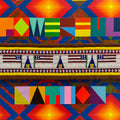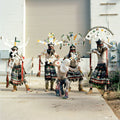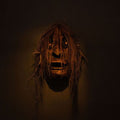Danielle SeeWalker and Carlotta Cardana share contemporary photos of Native America
By Chadd Scott on
Walking the Red Road.
Living life with purpose, in good relation, on a path to positive change.
The expression can be heard around Indian Country.
Artists Danielle SeeWalker (Hunkpapa and Oglala Lakota) and Carlotta Cardana founded the Red Road Project in 2013, committed to documenting the stories and teachings of contemporary Native people enacting positive change and celebrating their cultural heritage. Walking the Red Road. The project forwards Native voices, providing a platform for telling their own stories in their own words.
Highlights of what SeeWalker and Cardana have found can be seen at the Bedford Gallery in Walnut Creek, CA during the exhibition, “Re-Discovering Native America: Stories in Motion with The Red Road Project,” a photo-docuseries sharing images depicting the beauty and resilience of Native American people and cultures. Nearly 100 photographs are on view, a mix of landscape and portraits, often of community activists and leaders who “walk the Red Road.”
Revealed are scenes of the ordinary and extraordinary. Subjects are shown wearing Apache dancer regalia, and t-shirts and jeans.
Jingle dancing. Skateboarding. Cooking. Hanging out.
Strong people. Proud people. Contemporary people.
Regular people.

Through this ongoing series, the Red Road Project aims to illustrate how Native American tribes and nations have overcome constant attempts of cultural and literal genocide and acknowledge the residual scars of colonization, as well as bringing forth impactful stories of resilience, resistance, and revitalization happening in those communities today.
In a country where simply living as a Native person has been a defiant act of resistance, where Native people have been “othered” and segregated, images showing contemporary Indigenous people engaged in everyday activities makes a powerful artistic statement.
The statement is that Native people are here. They are neighbors.
Native people are more like you than they are different.
Native people are people.
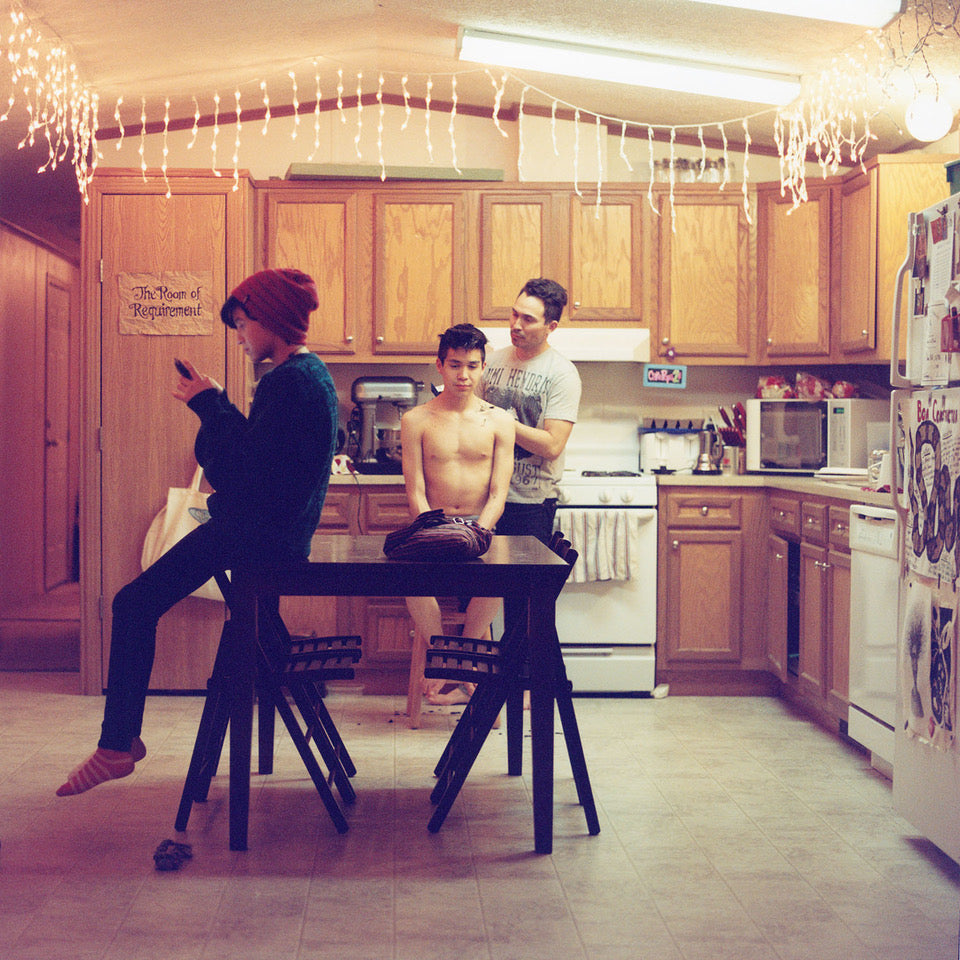
The Red Road Project, 'Scotti Jr.'s Haircut,' 2015. Photograph on fine art giclée paper. 24 by 24 inches.
The Bay Area is Indian Country
Photographs in the exhibition date back to the project’s beginning in 2013 and continue through a new set collected by the duo during a two-week Bay Area residency in February 2024. These works tell the unique stories of Indigenous people based in Northern California with an emphasis around San Francisco.
The Bay Area has long been a hotbed of Native American arts and resistance. Mostly prominently, it was the site of the Indian occupation of Alcatraz in 1969-1971.
Lesser known outside of Native communities is the Indian Relocation Act of 1956. This federal measure encouraged tens of thousands of Native people to leave their reservations, severing ties to community and family. Cultural genocide on the down low. Natives were lured out under the promise of better jobs and more economic opportunity in big cities. Three of the 10 national relocation hubs were San Francisco, Oakland, and San Jose.
As a center for Native arts, figures no less prominent than T.C. Cannon (Kiowa, Caddo), Earl Biss (Apsáalooke) and Doug Hyde (Nez Perce, Assiniboine, Chippewa) all continued their studies at the San Francisco Institute of Art in the 1960s following enrollment at the Institute of American Indian Arts in Santa Fe.
After graduating high school in 1964, artist Jean LaMarr (Northern Paiute/Pit River) relocated to San Jose as part of the Indian Relocation Act. She attended San Jose City College and then U.C. Berkeley. She participated in protests during the occupation of Alcatraz and the Pit River Occupation in Shasta County in 1970.
Today, the Bay Area sits at the vanguard of the Land Back movement in America.
Preeminent Native writer and activist Julian Brave NoiseCat (Canim Lake Band Tsq'escen) was raised in Oakland.
“(Oakland) played a significant role in the Native Rights movement in the late 60s and early 70s.”he said. “I grew up with elders in our community who were part of that and shared their stories and that played a huge role in my development as a person, as a thinker, as an engaged person in the world. If I had to position myself as part of a tradition, I’ve always hoped I could be part of that tradition which stretches from Alcatraz and Oakland out into the broader world of Indigenous peoples and all people.”

The Red Road Project, 'The Indian Wars are not Over,' 2013. Photograph on fine art giclée paper. 24 by 24 inches.
Walking the Red Road
SeeWalker is Native. Cardana is not. She was born and raised in Northern Italy.
Cardana’s presence in the Red Road Project confirms one needn’t be Native American to “walk the Red Road.” Walking the Red Road is a way of life, not genetics.
I am white and I try daily to “walk the Red Road.”
Don’t confuse that with cultural appropriation, cosplay, or “pretendians.”
I do so as a choice.
A preference toward Indigenous attitudes – generally speaking – I find more in line with my perspectives on the world. Centering community over the individual. Deemphasizing material possessions. Living life in balance with Mother Earth. Honoring animals and the seasons.
From before I was a teenager, I recognized Native American beliefs and life ways more closely aligned to what I felt was right than the materialistic, capitalistic, individualistic society I was born into in white, suburban, middle class, Middle America. My conviction to those beliefs has only grown in the subsequent decades.
But I’m not Native.
I’d never dare tell anyone how to “walk the Red Road.”
I don’t know, I try.
What I can do is share how I try.
I try walking the Red Road by educating myself. Not only about Native history – broken treaties, Indian Wars, boarding schools, the Sixties Scoop – but the issues that are important across Indian Country today. Land back. Extractive industries. Indian Child Welfare. Sovereignty. Missing and Murdered Indigenous Women.
I consume Native news media. I consume Native pop culture.
Does watching “Reservation Dogs” or “Killers of the Flower Moon” equate to “walking the Red Road?” Not for me to determine, but I believe supporting Indigenous creators and storytelling with my eyeballs and dollars signals there’s a market for this content. A market beyond Native people.
I follow Native American social media accounts.
I try walking the Red Road by supporting Native artists. Buying contemporary Native artwork supports Native people directly. It supports their efforts to maintain their cultures and stories.
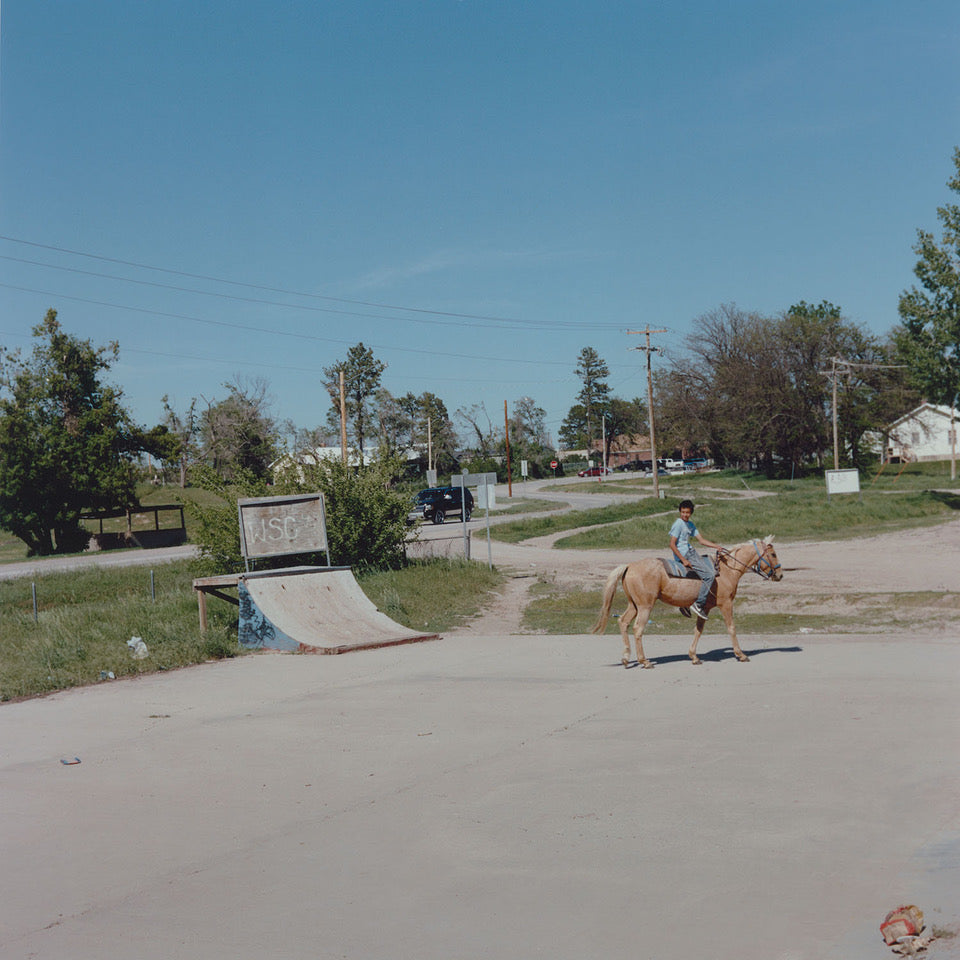
The Red Road Project, 'Pine Ridge Skatepark,' 2014. Photograph on fine art giclée paper. 24 by 24 inches.
I try walking the Red Road by voting, by finding out where local, state, and federal candidates stand on Native issues. I want to see more Native people in government positions. I want to see Native people more routinely sought out for their expertise in solving the country’s biggest problems from economic inequality, police violence, climate change, and biodiversity collapse to reductions in personal freedoms.
I try walking the Red Road by being in good relation. Through my position as an arts writer, I go out of my way to showcase the work of Native artists. To champion them. To learn from them. To carry what I learn into my daily life and pass those lessons along like I’m doing here.
I try walking the Red Road by planting native plants, by not using pesticides, by helping turtles cross the road, by contributing to environmental advocacy charities. In every action I take, I think about how it will affect Mother Earth.
That’s me.
“Re-Discovering Native America: Stories in Motion with The Red Road Project” opened on April 13 and remains on display through June 23, 2024. In addition to the photographs, a selection of sculptural works by Native artists Danielle Boyer (Ojibwe), Gregg Deal (Pyramid Lake Paiute), Tyler Eash (Maidu), Chelsea Kaiah (White Mountain Apache and White River Ute), Brent Learned (Cheyenne-Arapaho), Dallin Maybee (Seneca and Northern Arapaho), Carmen Selam (Yakama and Comanche), and Anna Tsouhlarakis (Navajo and Creek) will be on view.
